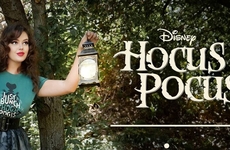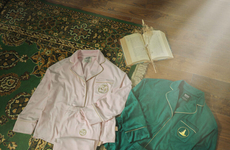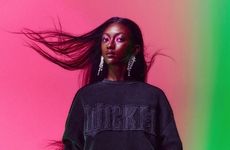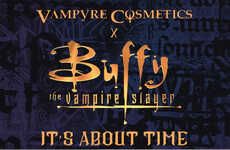
Armida Ascano — March 20, 2013 — About
References: nytimes
Originally brought to mainstream fashion through the success of the 1996 film 'The Craft,' the witch has found her way back into the style world in 2013. Chief Trend Hunter Jeremy Gutsche dove into this craze with Ruth La Ferla from the New York Times, discussing the origins and implications of witchcraft-chic.
Following the wave of paranormal pop culture phenomenons, such as Twilight, True Blood and The Walking Dead, the obsession with witchcraft is a natural next step. Films such as 'Beautiful Creatures,' which follows a young witch and her coming-of-age story, have really brought the craving for occult symbolism, leather and black to light -- or rather, dark -- for today's fashionista.
Gutsche explains the style is appealing because it deviates so far from the standard definition of femininity pushed in Fairy Tales from childhood. "Consumers want a more edgy, dark and villainous vibe to make these childhood stories more enticing," he states. In today's liberal age, the witch is simply easier to relate to than the damsel in distress.
THE NEW YORK TIMES
By: Ruth La Ferla
This latest infatuation with paganism can be read as a timely acknowledgment that the world isn’t all one could wish it to be. Contemporary witches and dystopian fantasies are, in some views, a corrective to the childhood notion that the good and the fair will invariably prevail. “There is evil,” Lena’s boyfriend, Ethan, reminds her in “Beautiful Creatures.” In that film, wickedness is embodied by Ridley, Lena’s voluptuous, ornately tricked out cousin.
Sugarcoated entertainments are less likely to appeal to moviegoers reeling in the recession’s aftermath, Jeremy Gutsche, the editor of the online publication Trendhunter, suggested.
“Consumers want a more edgy, dark and villainous vibe to make these childhood stories more enticing,” Mr. Gutsche said. One, he might have added, more in tune with their adult experiences.
The witch as heroine, or shameless avatar of vice, may be catnip as well to a younger generation that models itself on self-possessed, candidly subversive action heroes like Katniss Everdeen of “The Hunger Games” or Lisbeth Salander of “The Girl With the Dragon Tattoo,” whose long-hooded overcoat, red-rimmed eyes and feral piercings bring to mind a hybrid of street thug and Satanist.
Following the wave of paranormal pop culture phenomenons, such as Twilight, True Blood and The Walking Dead, the obsession with witchcraft is a natural next step. Films such as 'Beautiful Creatures,' which follows a young witch and her coming-of-age story, have really brought the craving for occult symbolism, leather and black to light -- or rather, dark -- for today's fashionista.
Gutsche explains the style is appealing because it deviates so far from the standard definition of femininity pushed in Fairy Tales from childhood. "Consumers want a more edgy, dark and villainous vibe to make these childhood stories more enticing," he states. In today's liberal age, the witch is simply easier to relate to than the damsel in distress.
Read the Full Article at NY Times
Witches Lose the Warts
THE NEW YORK TIMES
By: Ruth La Ferla
This latest infatuation with paganism can be read as a timely acknowledgment that the world isn’t all one could wish it to be. Contemporary witches and dystopian fantasies are, in some views, a corrective to the childhood notion that the good and the fair will invariably prevail. “There is evil,” Lena’s boyfriend, Ethan, reminds her in “Beautiful Creatures.” In that film, wickedness is embodied by Ridley, Lena’s voluptuous, ornately tricked out cousin.
Sugarcoated entertainments are less likely to appeal to moviegoers reeling in the recession’s aftermath, Jeremy Gutsche, the editor of the online publication Trendhunter, suggested.
“Consumers want a more edgy, dark and villainous vibe to make these childhood stories more enticing,” Mr. Gutsche said. One, he might have added, more in tune with their adult experiences.
The witch as heroine, or shameless avatar of vice, may be catnip as well to a younger generation that models itself on self-possessed, candidly subversive action heroes like Katniss Everdeen of “The Hunger Games” or Lisbeth Salander of “The Girl With the Dragon Tattoo,” whose long-hooded overcoat, red-rimmed eyes and feral piercings bring to mind a hybrid of street thug and Satanist.
Trend Themes
1. Occult-inspired Fashion - Disruptive innovation opportunity: Brands can capitalize on the public's infatuation with witchcraft and pagan symbolism by creating fashion lines that incorporate occult-inspired designs.
2. Dark and Edgy Aesthetics - Disruptive innovation opportunity: Businesses can cater to consumers' desire for a more villainous vibe by offering products and experiences that embrace a dark and edgy aesthetic.
3. Empowered Anti-heroes - Disruptive innovation opportunity: Industries can tap into the popularity of empowered anti-heroes in popular culture by creating products and services that cater to the desire for self-possessed, subversive figures.
Industry Implications
1. Fashion - Disruptive innovation opportunity: The fashion industry can embrace occult-inspired designs and dark aesthetics to create unique and appealing collections that cater to the witchcraft-chic trend.
2. Entertainment - Disruptive innovation opportunity: The entertainment industry can capitalize on the obsession with dark aesthetics and empowered anti-heroes by producing films, TV shows, and books that cater to these themes.
3. Cosmetics - Disruptive innovation opportunity: The cosmetics industry can create products that embrace the occult aesthetic, offering unique makeup and beauty options for consumers who want to embody the witchcraft-chic trend.
1
Score
Popularity
Activity
Freshness























